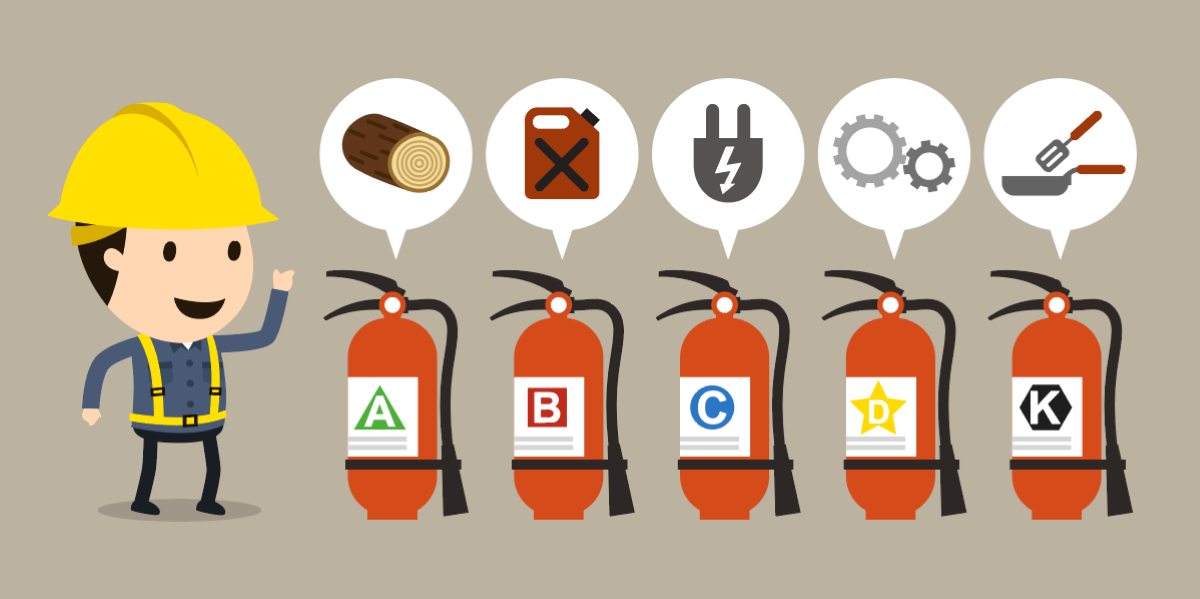
There are five classes of fire, each of which is based on the fire’s cause. Different classes burn at different speeds and require different types of extinguishing agents. For this reason, there are also five classes of fire extinguishers.
Using the wrong fire extinguisher can increase your risks of electrical shocks, burns, or explosions. In some cases, the wrong extinguishing agent will cause the fire to spread faster. You can put out fires more safely and effectively when you’re familiar with these five classifications.
Class A Fires
A class A fire utilizes solid materials as its source of combustion. Any flammable solid can feed a fire, including wood, paper, fabric, and even light plastics.
Class A fires are the easiest to extinguish, as you can simply douse them with water. Alternatively, you can smother these types of fires by removing the oxygen from the area.
However, the best way to eliminate this type of fire is with an ABC fire extinguisher, which uses a powdered chemical substance to smother the fire.
Class B Fires
This class of fire identifies those caused by liquid accelerants, such as alcohol, gasoline, or methane. Grease fires also fall into this category.
You can smother a class B fire if you don’t have an ABC fire extinguisher. Use a fire retardant blanket or another fire-resistant material to remove the oxygen and stifle the flames.
Class C Fires
Wiring problems, such as shorts, faults, and electric arcs, often cause class C fires. These fires typically occur near outlets, appliances, and machinery. You can prevent a class C fire through regular electrical inspections and by replacing defective machinery or appliances.
To put out this type of fire, use non-conductive chemicals. An ABC extinguisher or a carbon dioxide (CO2) extinguisher will be most useful for this purpose.
Class D Fires
Metallic agents fall under the class D type of fire. These substances include titanium, zirconium, magnesium, or sodium. Consequently, these fires are more commonly found in labs or facilities that store chemical compounds.
You should never use water to put out a class D fire. Instead, you must use a powder-based fire extinguisher. Using anything other than a class D fire extinguisher on these types of fires can cause the fire to spread faster.
Class K Fires
This classification refers specifically to kitchen fires resulting from grease or oil. Cooking oils like vegetable oil, peanut oil, and bacon fat often contribute to class K fires. This is the most dangerous type of fire because it spreads so rapidly.
The class K fire extinguisher uses a chemical-based foam to smother fires. Additionally, the foam helps reduce the risks that the oil or grease will splash or spread. It’s also possible to smother this type of fire if a class K extinguisher isn’t available.
Keep Your Fire Extinguishers in Good Working Order
In addition to complying with legal requirements, having your fire extinguishers inspected annually will help you protect your business. The yearly inspection will ensure the extinguishers work when you need them most. Always replace old or damaged fire extinguishers immediately.
To have Koorsen come out and inspect your fire extinguishers, fill out the contact us page here.



